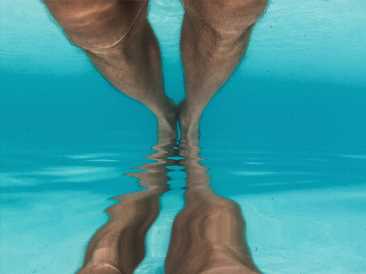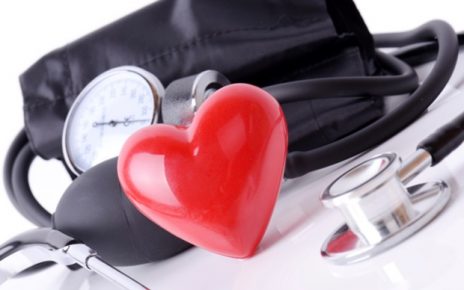
- A new study on near-death experiences featured 567 men and women whose hearts stopped while hospitalized in the United States and the United Kingdom.
- Out of 28 survivors of cardiac arrest interviewed as part of the study, 11 recalled memories suggesting consciousness while undergoing CPR.
- Additional cardiac arrest survivors provided self-reports about what they experienced while their hearts stopped.
- Reports included perceiving separating from their bodies and meaningful examinations of their lives.
- Researchers discovered spikes of brain activity up to an hour into CPR.
While finishing his medical degree at the University of London in the mid-90s, Dr. Sam Parnia watched as doctors attempted to revive a man in cardiac arrest. As he stood there, Dr. Parnia wondered whether the patient could hear the medical staff as they worked to revive him. Dr. Parnia asked himself, “What is life? When does it really end?”
Dr. Parnia, an intensive care physician, who is also an associate professor in the Department of Medicine at NYU Langone Health, as well as the organization’s director of critical care and resuscitation research, decided, right there in the hospital, that he was going to figure out the answer himself.
He thought the research might take a year or two. “Here we are 25 years later, and I’m still doing it,” Dr. Parnia told Medical News Today.
On November 6, Dr. Parnia presented “AWAreness during REsuscitation II: A multi-center study of consciousness and awareness in cardiac arrest” at the American Heart Association’s Scientific Sessions 2022 in Chicago.
Dr. Parnia, who served as lead investigator of the study, explained that he and the other researchers undertook this research in an attempt to scientifically explore something that health professionals have discussed anecdotally for decades: The similar stories people revived by cardiopulmonary resuscitation (CPR) often tell about the time when their hearts stopped.
“For decades now, millions of people who’ve gone through this have reported having lucid heightened consciousness, even though from the perspective of their doctors they were not conscious and they were in death,” Dr. Parnia told MNT.
A multiphase and multi-site study
The study centered around 567 men and women who received CPR after their hearts stopped beating while at one of 25 participating hospitals in the United States and the United Kingdom.
When health practitioners began CPR on a patient whose heart stopped, researchers rushed to the scene, bringing along a portable electroencephalogram, or EEG, to monitor electrical activity in different parts of the brain, and near-infrared spectroscopy (NIRS) to measure oxygen saturation of superficial brain cortex regions.
Taking care not to get in the way of health practitioners performing CPR, researchers also clamped a tablet computer above the patient’s head. The tablet was connected to Bluetooth headphones which were placed on the patient’s ears.
The tablet projected one of 10 stored images onto the screen. After 5 minutes, the computer played a recorded voice saying the words “apple,” “pear,” and “banana” every minute for 5 minutes.
“So when we designed this study, we wanted to not only have brain monitoring systems, but also to have a system to look for possible unconscious learning,” Dr. Parnia explained.
Of 567 subjects, 213 or about 38% experienced sustained return of spontaneous circulation, meaning their pulse was restored for 20 minutes or longer. Only 53, or fewer than 10% of the participants, lived to be discharged from the hospital.
Of those 53, 25 were unable to be interviewed by researchers due to poor health. The remaining 28 participants were interviewed 2 to 4 weeks after cardiac arrest depending on their recovery.
First, researchers gave survivors an Abbreviated Mental Test Score to assess deficits in their brains’ abilities to function. Patients who scored higher than six, indicating they likely did not have moderate cognitive impairment, underwent stage 1 interviews, which included questions about their memories of the time when they underwent CPR.
For stage 2 interviews, researchers used open-ended questions to learn about the patients’ experiences during cardiac arrest, and completed the 16-item near-death scale. Patients who recalled hearing or seeing things during their experiences went on to a stage 3 interview which was more in-depth.
Additionally, researchers asked participants to select one image out of ten and to state the names of three fruits they heard while receiving CPR.
The research also included a cross-sectional study to make up for the fact that so few people lived following cardiac arrest in the study conducted in hospitals. This larger population of survivors provided self-reports of their experiences.
Reports of transcendent experiences
Of the 28 participants interviewed, 11 — or 39% — reported having memories during cardiac arrest. Two of the 28 participants could hear the medical staff working while receiving CPR. One participant recalled seeing the medical staff working and could feel someone rubbing his chest.
Using the near-death scale, six participants had transcendent experiences. Three participants reported dream-like experiences, which included a singing fisherman.
Six of the 28 participants interviewed remembered the experience of dying. These recollections included one person who heard a deceased grandmother telling her to return to her body.
“We characterize the testimonies that people had and were able to identify that there is a unique recalled experience of death that is different to other experiences that people may have in the hospital or elsewhere,” Dr. Parnia said, “and that these are not hallucinations, they are not illusions, they are not delusions, they are real experiences that emerge when you die.”
From the 126 cardiac survivors who provided self-reports about their experiences, five themes emerged. Some participants recalled feeling the impact of CPR on their bodies or hearing the medical team talk. Others recalled activities in the intensive care unit following CPR.
Other self-reports detailed an experience of death. Some individuals perceived they were heading to a destination. Others underwent an evaluation of their lives.
These included realizations about how their actions impacted others. Some perceived they were returning to a place described as home. Some of the self-reported recollections included participants reporting frightening memories.
These, Dr. Parnia told MNT, were likely misinterpretations of medical events. For example, one participant believed he was burning in hell; however, researchers in the study write that he was likely feeling a burning from a “tissued” potassium intravenous line.
Biomarkers of clinical consciousness
Of the 28 participants interviewed, not one described seeing the image depicted on the tablet when they received CPR or remembered hearing the auditory stimuli. When provided with 10 photos to examine, no participants identified the displayed image. Only one of the 28 participants chose the fruits named when the participants received CPR.
Fifty-three participants had interpretable EEG data. Researchers discovered spikes of brain activity, including so-called gamma, delta, theta, alpha, and beta waves emerging up to 60 minutes into CPR.
Some of these brain waves normally occur when people are conscious and performing functions like memory retrieval and thinking. According to the researchers, this is the first time such biomarkers of consciousness have been identified during CPR for cardiac arrest.
“We found the brain electrical markers of heightened […] lucid consciousness, the same markers as you get in people who are having memory retrievals who are having […] high order cognitive processes, except that this was occurring when the brain had shut down and would suddenly appear as a surge.”
– Dr. Sam Parnia
Survivors may need psychological support
Dr. Lance Becker, chair of emergency medicine at Northwell Health in New York and professor at the Feinstein Institutes for Medical Research in Manhasset, NY, who was not involved in the study, pointed out that Dr. Parnia measured brain waves and brain oxygen of the participants.
“So he was super scientific-y, but he’s also pretty out of the box,” Dr. Becker told MNT.
As a medical student, Dr. Becker said he was taught that people who were in cardiac arrest were unconscious.
Dr. Parnia, Dr. Becker argued, did not believe everything he was taught. Instead, he questioned whether the patients receiving CPR had awareness of what was happening in the room despite the fact that the patients showed no signs of consciousness. “He is a pioneer,” Dr. Becker said.
For Dr. Tom Aufderheide, professor of emergency medicine and director of the Resuscitation Research Center at the Medical College of Wisconsin, who was also not involved in the study, the presentation prompted him to give thought to how to respond to patients experiencing cardiac arrest.
“There needs to be a wider recognition of patient cognitive experiences during cardiac arrest among treating physicians and healthcare providers with [the] incorporation of this reality into the compassionate care of our patients,” he told MNT.
Dr. Becker said the study may change how he deals with patients who have survived cardiac arrest.
“It taught me that we need to talk to patients afterward,” he told MNT. “And kind of see how they’re feeling about surviving the cardiac arrest. Dr. Parnia has identified that many of those patients have some very positive things [to report following cardiac arrest] […] but, on the other hand, some of the patients had negative experiences: anxiety and depression afterward.”
Source: Read Full Article



